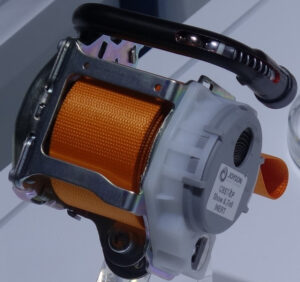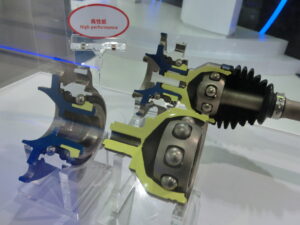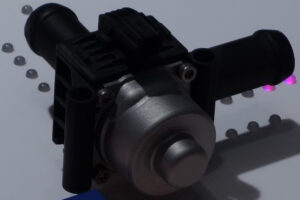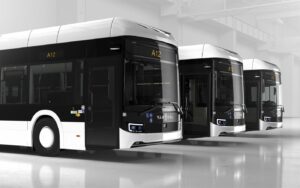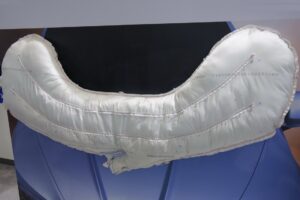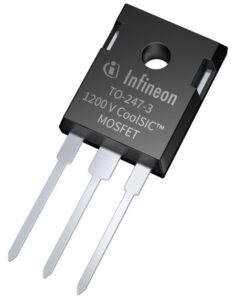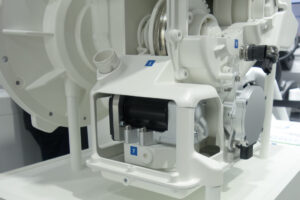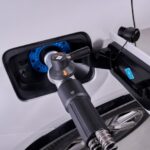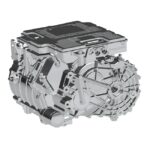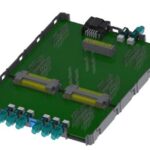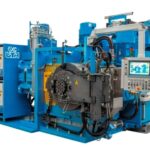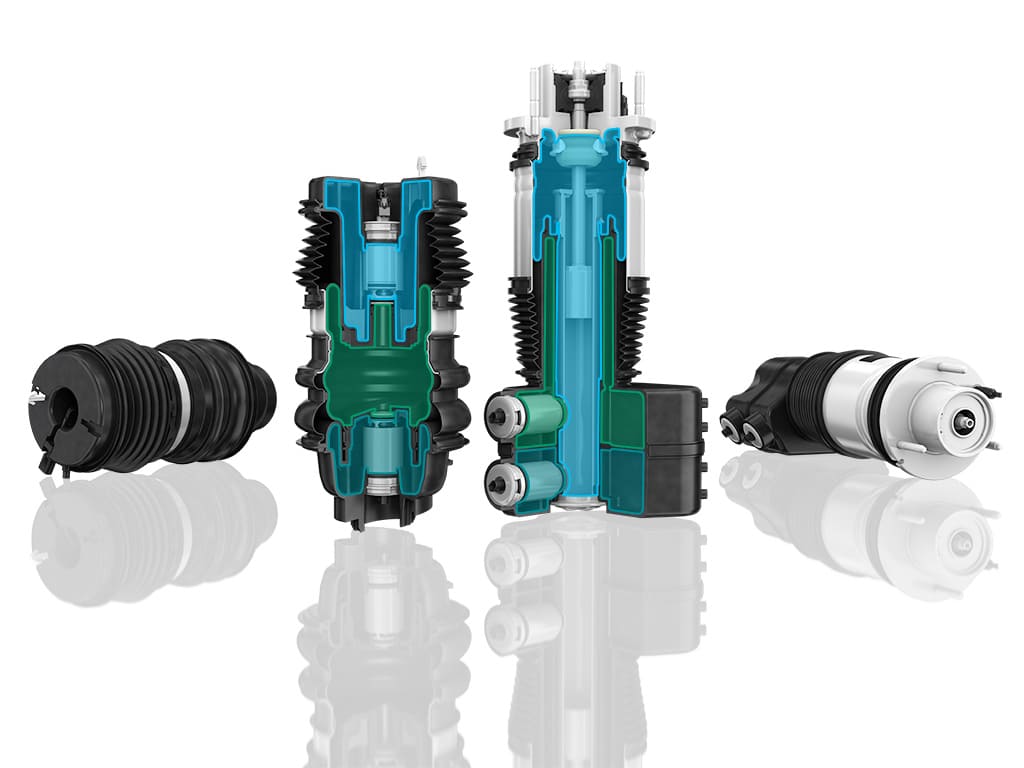
The air springs use a complex design with build in safety features and silent valve switching for the air chambers, all while securing comfort and driving dynamics.
The sleek design of performance vehicles often leads to tight packaging, making it difficult to achieve the required volume within the air springs, which is directly related to comfort. To tackle this, Vibracoustic’s engineers designed an intricate solution, comprising four plastic components, produced using an innovative Hot Gas Welding process, which is instrumental in enabling complex thermoplastic component manufacturing, without compromising component strength or stability. This allowed the solution to achieve the required performance and NVH characteristics. Furthermore, battery safety is another focus area, typical for BEVs, which was supported by the suitable solution design. Through the integration of innovative ‘plugs’ in the design of the part, the suspension strut is prevented from impacting the battery pack in an event of a crash.
Furthermore, the near-silent running of electric drivetrains presented another challenge for Vibracoustic’s engineers who had to tackle the more perceivable noises from the switching valves within the air springs, particularly for the rear axle where the spring is closer to the cabin. To address this, the relative position of the valves within the air spring were taken into consideration, with a different solution for the front and rear.
Vibracoustic’s three-chamber air spring has three switchable air volumes, allowing it to produce four different stiffness rates depending on the driving situation, which is directly related to the comfort and driving experiences. The more chambers are activated, the lower the stiffness is and the higher the comfort. The air springs can switch between four modes, ranging from a comfortable mode, using all chambers’ volume to a very dynamic mode, using the smallest volume, for which the stiffness more than doubles. The system also utilizes body and wheel acceleration sensors to enable individual damper control at each axle, adjusting according to driver input, road conditions, and the road surface. This means that the Audi e-tron GT’s suspension can be altered ‘on the fly’ during cornering, braking, and acceleration to minimize roll and pitch movements. The system can also adjust its height based on the driving situation and speed, moving between a total range of 60mm.


